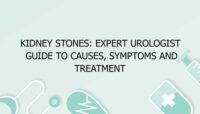Trachoma is a chronic infectious disease caused by the bacterium Chlamydia trachomatis, which primarily affects the eyes. It is a significant public health issue in many developing countries, where it remains one of the leading causes of preventable blindness. Understanding trachoma requires an exploration of its causes, symptoms, types, and treatment options, as well as its broader impact on communities and individuals.
Causes of Trachoma
The primary cause of trachoma is infection with Chlamydia trachomatis. This bacterium can be transmitted through several pathways, predominantly via direct contact with eye secretions from an infected person. It can also spread through contaminated materials such as towels or clothing, and even through insects that have come into contact with the discharge. Poor sanitation and lack of clean water are significant contributing factors to the spread of trachoma, especially in regions with limited access to healthcare and hygiene facilities.
Trachoma often begins in childhood and can progress if left untreated. The repeated cycles of infection can lead to a progressive inflammatory response, which ultimately results in scarring of the conjunctiva—the thin membrane that covers the eye. This scarring can lead to entropion, a condition where the eyelids turn inward, causing the eyelashes to rub against the eyeball, resulting in pain and potential vision loss.
Social determinants such as poverty, inadequate access to clean water, and crowded living conditions significantly exacerbate the spread of trachoma. Communities with limited resources may struggle to implement preventive measures, allowing the disease to persist. Education and awareness are vital in preventing the transmission of trachoma, as understanding the importance of hygiene and sanitation can help reduce its incidence.
Symptoms of Trachoma
The symptoms of trachoma can vary depending on the stage of the disease. In its early stages, trachoma may not present any noticeable symptoms, making early detection challenging. However, as the disease progresses, symptoms may include:
- Eye Discharge: Individuals may experience a watery or purulent discharge from the eyes, which can lead to crusting, especially after sleep.
- Redness and Inflammation: The conjunctiva may appear red and inflamed, a condition known as conjunctivitis.
- Irritation and Pain: Patients often report feelings of irritation, burning, or a gritty sensation in the eyes.
- Photophobia: Sensitivity to light can develop, making bright environments uncomfortable.
- Swelling of the Eyelids: The eyelids may become swollen due to inflammation.
In advanced stages of trachoma, more severe symptoms can occur, including:
- Entropion: As the conjunctiva becomes scarred, the eyelids may turn inward, causing the eyelashes to rub against the cornea.
- Corneal Opacity: Prolonged inflammation and scarring can lead to clouding of the cornea, resulting in vision impairment or blindness.
- Vision Loss: If left untreated, trachoma can lead to irreversible blindness, significantly impacting an individual’s quality of life.
Recognizing the symptoms of trachoma is crucial for early intervention. Communities that are educated about the signs can seek treatment promptly, helping to reduce the risk of complications and transmission.
Types of Trachoma
Trachoma can be categorized based on the severity of the disease and the stage of infection. The World Health Organization (WHO) has established classifications to guide diagnosis and treatment:
Active Trachoma: This is characterized by the presence of inflammatory changes in the conjunctiva, often marked by follicles or papillary hypertrophy. Active trachoma is more common in children and is an indicator of ongoing transmission in a community.
Cicatricial Trachoma: This stage occurs when repeated episodes of active trachoma lead to scarring of the conjunctiva and eyelid. It is often associated with entropion, which can cause significant discomfort and complications.
Blindness due to Trachoma: In advanced cases, if the disease is left untreated, it can lead to severe vision impairment or blindness. This stage is often irreversible, emphasizing the need for timely treatment and preventive measures.
Trachomatous Inflammation—Follicular (TF): This form is characterized by the presence of follicles on the upper tarsal conjunctiva and is indicative of an active infection.
Trachomatous Inflammation—Papillary (TI): In this stage, there are papillary changes in the conjunctiva, typically associated with more severe inflammation.
Each type of trachoma presents distinct challenges for public health, necessitating tailored intervention strategies to address both immediate needs and long-term prevention.
Treatment of Trachoma
The treatment of trachoma involves a combination of medical and surgical interventions aimed at alleviating symptoms, preventing disease progression, and promoting public health. The WHO recommends a comprehensive approach known as SAFE, which includes:
- Surgery: For individuals with advanced trachoma characterized by entropion, surgical intervention may be necessary. Surgical procedures can correct the inward turning of the eyelids, preventing the eyelashes from rubbing against the cornea and reducing the risk of vision loss.
- Antibiotics: The use of antibiotics, particularly azithromycin, is effective in treating the active infection caused by Chlamydia trachomatis. Mass drug administration (MDA) programs in endemic communities can help reduce the prevalence of trachoma and prevent outbreaks. The treatment typically involves a single dose of azithromycin, which is effective in clearing the infection and alleviating symptoms.
- Facial Cleanliness and Environmental Improvements: Educating communities about the importance of facial hygiene, particularly among children, is essential. Regular handwashing and keeping the face clean can significantly reduce the transmission of trachoma. Improving access to clean water and sanitation facilities also plays a critical role in preventing the spread of the disease.
- Epidemiological Surveillance: Ongoing monitoring and assessment of trachoma prevalence in communities are vital for evaluating the effectiveness of interventions and adapting strategies as needed.
Public health campaigns that focus on education, hygiene promotion, and access to healthcare are crucial components of trachoma management. Global initiatives, including the WHO’s goal to eliminate trachoma as a public health problem by 2030, emphasize the importance of coordinated efforts to address the social determinants of health that contribute to the spread of the disease.
FAQs about Trachoma
What is trachoma and how does it spread?
Trachoma is an infectious disease caused by the bacterium Chlamydia trachomatis, primarily affecting the eyes and leading to preventable blindness. The disease is spread through direct contact with the eye discharge of an infected person, which can occur when individuals touch their eyes or faces with contaminated hands. Additionally, sharing personal items like towels or clothing can facilitate transmission. Flies that have come into contact with the eye secretions of infected individuals can also act as mechanical vectors, spreading the bacteria in environments where sanitation is poor. The risk of trachoma is heightened in areas with inadequate access to clean water, crowded living conditions, and a lack of proper hygiene practices. Education about personal hygiene, such as regular handwashing and face cleaning, is crucial for reducing transmission rates. Communities with higher prevalence rates often experience repeated cycles of infection, especially among children, underscoring the need for comprehensive public health strategies to address both the immediate and underlying causes of trachoma. By improving sanitation and hygiene, communities can significantly decrease the incidence of trachoma and protect their populations from this preventable condition.
What are the symptoms of trachoma, and how can they be recognized?
Trachoma symptoms can vary based on the stage of the disease, with early signs often being subtle or absent. As the infection progresses, individuals may experience a range of symptoms that can help in recognizing the disease. Early symptoms may include mild irritation, redness of the eyes, and a watery or pus-like discharge, which can cause crusting, especially after sleep. As the disease advances, the symptoms become more pronounced; affected individuals may experience increasing discomfort, including a gritty or burning sensation in the eyes and sensitivity to light (photophobia). The eyelids may become swollen, and the conjunctiva can appear inflamed, indicating an active infection. In more severe cases, scarring of the conjunctiva may occur, leading to entropion, where the eyelids turn inward, causing the eyelashes to rub against the cornea. This can result in severe pain, corneal opacity, and ultimately vision loss if not treated. Early recognition and intervention are crucial, as timely treatment can prevent complications and reduce the risk of blindness. Community education about these symptoms is vital to encourage individuals to seek medical attention promptly, thereby improving outcomes and reducing the overall burden of trachoma.
What types of trachoma exist, and how do they differ?
Trachoma can be classified into several types based on the severity of the disease and the stage of infection. The World Health Organization (WHO) provides classifications to guide diagnosis and treatment. The primary types include active trachoma, characterized by inflammation and follicles on the conjunctiva, often seen in children and indicating ongoing transmission within a community. Another type, cicatricial trachoma, develops after repeated episodes of active infection, leading to scarring of the conjunctiva and eyelid. This condition is often associated with entropion, where the eyelids turn inward, causing significant discomfort and complications.
Active trachoma is further divided into two forms: Trachomatous Inflammation—Follicular (TF), marked by the presence of follicles, and Trachomatous Inflammation—Papillary (TI), characterized by papillary changes. Each type presents different challenges for public health, necessitating tailored intervention strategies. The distinction between these types is crucial for implementing appropriate treatment and management plans. For instance, while active trachoma can often be treated effectively with antibiotics, cicatricial trachoma may require surgical
intervention to correct eyelid position and prevent vision loss. Understanding these classifications helps healthcare providers prioritize interventions based on the severity and stage of the disease, ultimately contributing to better health outcomes for affected individuals and communities.
What treatment options are available for trachoma?
Treatment options for trachoma involve a comprehensive approach aimed at alleviating symptoms, preventing disease progression, and promoting public health. The World Health Organization (WHO) recommends a strategy known as SAFE, which encompasses Surgery, Antibiotics, Facial cleanliness, and Environmental improvements. For individuals with advanced trachoma characterized by entropion, surgical intervention may be necessary to correct eyelid positioning and prevent further damage to the cornea.
Antibiotic treatment, particularly with azithromycin, is effective in addressing the infection caused by Chlamydia trachomatis. Mass drug administration (MDA) programs in endemic communities aim to reduce the prevalence of active trachoma and prevent outbreaks, often involving a single dose of azithromycin. Promoting facial cleanliness, especially among children, is crucial for preventing transmission, as is improving access to clean water and sanitation facilities. These public health measures, combined with community education about hygiene practices, are essential for reducing the incidence of trachoma.
Ongoing epidemiological surveillance helps monitor the effectiveness of these interventions and informs necessary adjustments to treatment strategies. With these combined efforts, the goal is not only to treat existing cases but also to prevent the emergence of new infections, ultimately contributing to the elimination of trachoma as a public health problem.
How can communities prevent the spread of trachoma?
Preventing the spread of trachoma requires a multifaceted approach that addresses both individual behavior and broader community health initiatives. Education plays a pivotal role; informing community members about the causes and transmission of trachoma can encourage practices that reduce infection risk. Emphasizing the importance of facial cleanliness, particularly for children, can help limit the spread of the bacterium Chlamydia trachomatis. Regular handwashing and keeping the face clean are essential practices that should be promoted in schools, households, and community gatherings.
Access to clean water and proper sanitation facilities is critical in preventing trachoma. Communities should work towards improving infrastructure, ensuring that clean water is available for drinking, bathing, and washing. This can be supported by local and national health initiatives that focus on building sanitation facilities and promoting hygiene education.
Community health workers can be instrumental in implementing mass drug administration (MDA) programs, distributing antibiotics like azithromycin to at-risk populations to reduce the prevalence of active trachoma. Moreover, ongoing epidemiological surveillance can help monitor trachoma cases, enabling timely interventions.
Overall, a community-wide commitment to hygiene, sanitation, and health education is vital in preventing the spread of trachoma. Collaborative efforts among local health authorities, community organizations, and residents can foster an environment conducive to health, reducing the burden of trachoma and improving the overall well-being of affected populations.
What role does sanitation play in the transmission of trachoma?
Sanitation plays a crucial role in the transmission of trachoma, a disease primarily spread through contact with the bacterium Chlamydia trachomatis. Poor sanitation and inadequate access to clean water significantly increase the risk of trachoma infections, particularly in communities where hygiene practices are compromised. When individuals lack access to clean water for washing their hands and faces, the likelihood of transferring bacteria to their eyes increases. This is especially true for children, who are often more susceptible to infection and may not consistently practice good hygiene.
In addition, unsanitary living conditions can foster environments conducive to the proliferation of flies, which can act as mechanical vectors for the transmission of the bacteria. Flies can carry the discharge from infected individuals and contaminate surfaces and food, further spreading the disease.
Improving sanitation facilities—such as toilets, waste disposal systems, and water supply—can significantly reduce the incidence of trachoma. Public health initiatives focusing on sanitation improvements, alongside education on proper hygiene practices, are essential for breaking the transmission cycle. Communities that prioritize sanitation and hygiene are better equipped to prevent trachoma and other infectious diseases, ultimately enhancing overall public health.
What is the global impact of trachoma, and why is it considered a public health issue?
Trachoma has a significant global impact, particularly in low-income countries where it remains a leading cause of preventable blindness. According to the World Health Organization, hundreds of millions of people are at risk of trachoma, and tens of millions are affected by its consequences. The disease disproportionately affects marginalized communities, often exacerbating existing health disparities.
The impact of trachoma extends beyond individual health; it also affects community productivity and economic development. Individuals suffering from vision impairment or blindness may be unable to work, care for their families, or participate fully in society, leading to increased poverty and social isolation. In regions where trachoma is endemic, the burden on healthcare systems can be substantial, as resources are directed toward managing the disease and its complications rather than preventative measures.
Recognizing trachoma as a public health issue is essential for mobilizing resources, raising awareness, and implementing effective interventions. Global initiatives, such as the WHO’s roadmap for the elimination of trachoma, emphasize the need for coordinated efforts to address the disease through comprehensive strategies that include surgery, antibiotic distribution, hygiene promotion, and environmental improvements. By prioritizing trachoma elimination, countries can improve the quality of life for affected individuals and communities while reducing the long-term healthcare costs associated with blindness and its associated complications.
How can healthcare systems effectively address trachoma in endemic regions?
Healthcare systems can effectively address trachoma in endemic regions through a multifaceted approach that encompasses prevention, diagnosis, treatment, and ongoing surveillance. A robust strategy includes implementing the SAFE approach recommended by the World Health Organization, which encompasses Surgery, Antibiotics, Facial cleanliness, and Environmental improvements.
First, healthcare providers must ensure that surgical services are available for individuals with advanced trachoma, particularly those experiencing entropion. Training local surgeons and providing access to surgical resources can significantly reduce the risk of vision loss.
Second, mass drug administration (MDA) programs can be organized to distribute antibiotics like azithromycin to at-risk populations, effectively reducing the prevalence of active trachoma. Engaging community health workers to facilitate these programs can improve coverage and compliance.
Third, educating communities about the importance of hygiene and sanitation is vital. Healthcare systems should collaborate with local organizations to promote facial cleanliness and improve access to clean water and sanitation facilities. Public awareness campaigns can help reinforce these messages.
Finally, continuous epidemiological surveillance is essential for monitoring the prevalence of trachoma and evaluating the effectiveness of interventions. Regular assessments can guide healthcare systems in adapting strategies and allocating resources effectively.
By adopting a comprehensive approach that integrates these elements, healthcare systems can significantly reduce the burden of trachoma in endemic regions, improve health outcomes, and move closer to the goal of eliminating trachoma as a public health problem.


